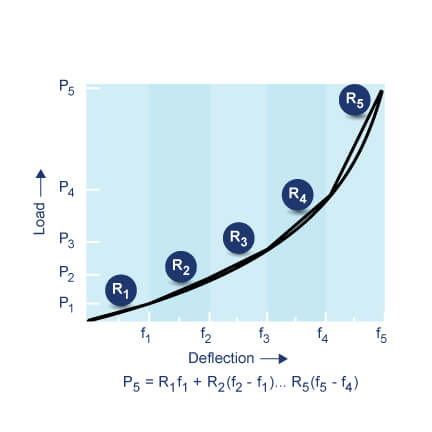Compression Spring Loads
Compression Spring Design Resources – Spring Loading
When deflection of a compression spring is known, loads are determined by multiplying deflection by the spring rate. When the stress is known, or assumed, loads are determined from the torsional stress equation. The procedure used to determine compression spring loads of variable rate springs is complex. In this case, the compression spring load deflection curve is approximated by a series of short chords. The spring rate is calculated for each chord and multiplied by deflection to obtain the load. The load is then added to that calculated for the next chord. The process is repeated until load has been calculated for the desired value of deflection.
Compression spring loads should be specified at a test height. Because the load deflection curve is often not linear at very low loads or at loads near solid, loads should be specified at test heights between 15 and 85% of the full deflection range.
Content Copyright Spring Manufacturers Institute, Inc.
This information is attributed to, and provided courtesy of, the Spring Manufacturers Institute, Inc. (SMI). Newcomb Spring and SMI provide this as advisory information only, and disclaim any and all liability of any kind for the use, application or adaption of material published on this web site.
Resource Illustration

Compression spring loads should be specified at a test height. Because the load deflection curve is often not linear at very low loads or at loads near solid, loads should be specified at test heights between 15 and 85% of the full deflection range.